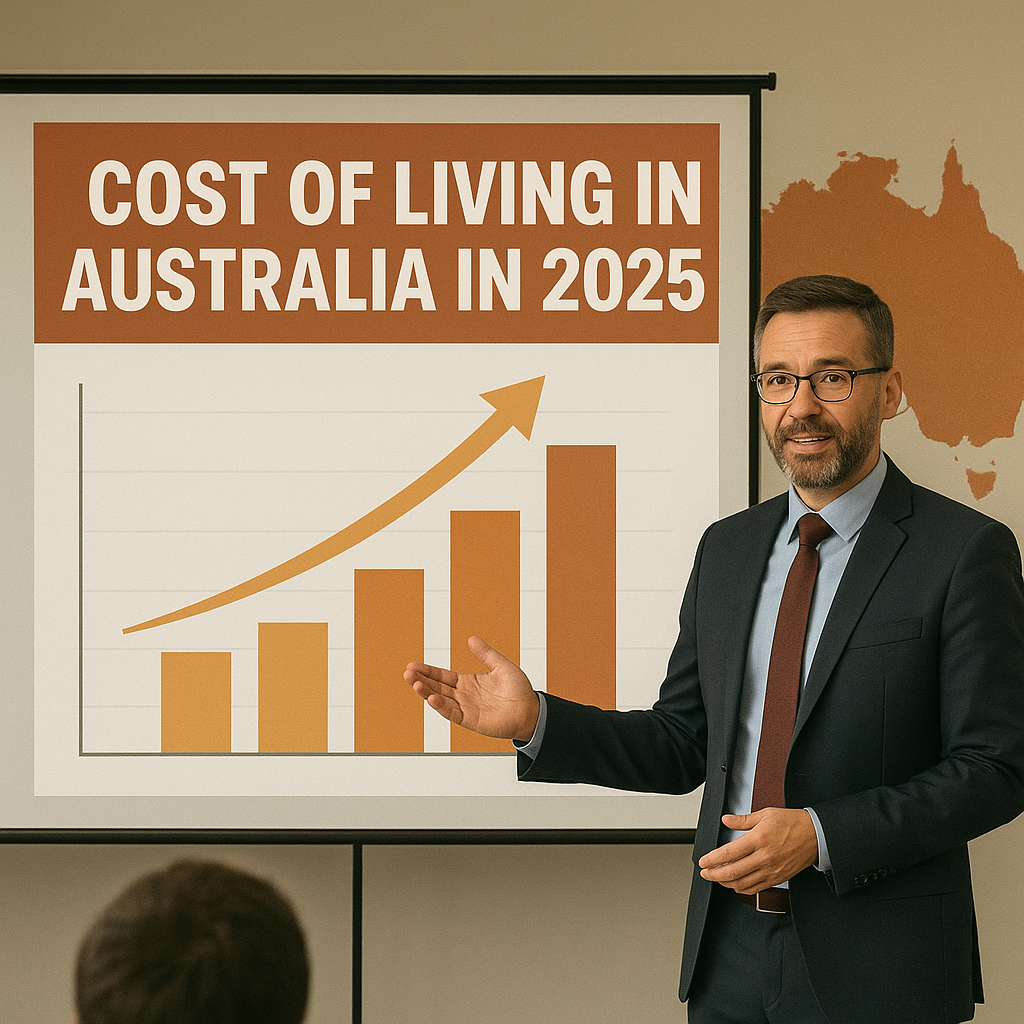Compare the comprehensive cost of living in Australia’s major cities in 2025, including housing, food, transport, and utilities to plan your budget effectively.
Introduction
Australia remains a top destination for migrants, students, and professionals, drawn by its quality of life and opportunities. However, cost of living varies significantly across its cities, influencing where people choose to settle. In 2025, rising housing prices and inflation have heightened living expenses, making it crucial to understand each city’s cost dynamics before relocating. This article compares the cost of living in Australia in 2025 across major cities like Sydney, Melbourne, Brisbane, Adelaide, and Perth, providing a detailed breakdown of accommodation, transport, groceries, and other expenses to help you budget confidently.
Housing Costs: The Biggest Factor in City Living Expenses
Accommodation is a dominant part of most budgets and differs wildly between cities and neighborhoods.
- Sydney consistently tops the charts as Australia’s most expensive city for housing. A one-bedroom apartment in the city center averages around AUD 3,000 per month, with prices slightly lower in suburbs at AUD 2,200. This price reflects Sydney’s global appeal but also the challenges migrants face in finding affordable rentals.
- Melbourne follows closely with city-center rents around AUD 2,500 and outer suburbs approximately AUD 1,900 monthly. The city offers somewhat more competitive prices in outer areas but rising demand is pushing costs up.
- Brisbane and Adelaide present more affordable options, with inner-city one-bedroom rents ranging from AUD 1,800 to 2,200 and even lower rents in suburban areas. These cities attract many migrants seeking balance between lifestyle and living costs.
- Perth and Hobart generally offer the lowest rents among major cities, with city center rates around AUD 1,600–1,800 and lower costs outside the central districts.
Utilities—including electricity, water, gas, and internet—add an additional AUD 200–300 per month, often not included in rent.
Transport Costs Vary with City Infrastructure
Transportation expenses depend heavily on the city’s public transport availability, fuel costs, and average commute distances.
- Sydney and Melbourne offer extensive metro, rail, and bus networks, but ticket prices tend to be higher compared to smaller cities. Adult weekly public transport passes are typically AUD 50–60.
- Brisbane uniquely benefits from relatively low public transport fares, including subsidized options, making it attractive for migrant workers and students.
- Private vehicle costs—including fuel, parking, and insurance—varies but are generally higher in cities with heavy traffic congestion like Sydney.
For migrants relying on public transport, choosing a city with affordable and reliable options can substantially reduce monthly expenses.
Food, Groceries, and Dining Expenses: City-to-City Differences
Food costs are surprisingly consistent but still show variability influenced by local economic factors.
- Sydney & Melbourne residents generally spend more on dining out and groceries due to higher real estate costs affecting food business operations.
- Suburban areas in Brisbane, Adelaide, and smaller cities typically offer cheaper fresh produce and grocery options.
- Eating habits and lifestyle choices significantly impact monthly food expenses: cooking at home vs. frequent meals out drastically change budgets.
Average monthly grocery bills for singles range from AUD 300–450, with dining out adding another AUD 200–350 depending on frequency.
Utilities and Internet: Fixed Monthly Expenses
Utility prices have steadily increased nationally due to energy market shifts and regulatory changes.
- Internet speeds and prices are generally competitive, with average monthly broadband around AUD 70–90.
- Electricity costs vary by state; recent increases have affected household budgets especially in Queensland and South Australia.
- Water and gas are typically modest but can add AUD 50–100 monthly depending on household size and usage.
Migrants must account for these fixed costs when planning monthly finances, especially in apartments where utilities may be separately billed.
Comparing Overall Cost of Living Indices Across Cities
Using data from Numbeo and other cost-of-living surveys for 2025:
| City | Cost of Living Index | Rent Index | Groceries Index | Restaurant Index | Local Purchasing Power |
|---|---|---|---|---|---|
| Sydney |
67.6 |
47.9 | 71.4 | 59.0 | 129.6 |
| Canberra |
66.8 |
35.2 | 71.6 |
65.3 |
120.6 |
|
Melbourne |
60.9 | 33.6 | 69.0 | 59.2 | 146.3 |
| Brisbane | 57.5 | 32.5 | 66.8 | 58.1 |
145.2 |
| Adelaide |
61.5 |
26.9 | 67.7 | 65.0 |
129.0 |
|
Perth |
58.9 | 30.0 | 66.8 | 63.1 |
141.0 |
Sydney remains the highest cost city overall, largely due to housing, followed by capitals like Canberra and Melbourne. Brisbane and Perth offer more affordable living combined with high local purchasing power.
Cost of Living for Specific Groups: Migrants and Students
For Skilled Migrants and Professionals
- Higher incomes may offset costs in cities like Sydney and Melbourne.
- However, the cost of renting and commuting should be carefully considered when choosing city and neighborhood.
For International Students
- Brisbane and Adelaide rank among the most cost-effective cities due to lower rents and affordable transport.
- Food and leisure costs tend to be manageable, but budgeting for health insurance and study-related expenses remains crucial.
For Families and Settlers
- Suburban areas in all cities provide more spacious, affordable housing but increase commute times and transport expenses.
- Access to schools and healthcare also varies and should be factored into living cost considerations.
Trends and Outlook for 2025 Living Costs in Australia
- Inflation pressures driven by global energy markets and domestic supply-chain disruptions continue influencing price rises.
- Housing demand fueled by migration and low interest rates has kept rents high in major cities, but some regional towns are gaining attractiveness.
- Governments are investing in public transport expansion and utilities modernization which may affect future costs.
Prospective migrants should regularly review official indices and local sources to stay informed of dynamic cost changes before making relocation decisions.
Conclusion
Australia’s cities offer diverse cost-of-living landscapes in 2025. Sydney and Melbourne present vibrant but expensive urban living, while cities like Brisbane, Adelaide, and Perth offer more balanced affordability with good amenities. Skilled migrants, students, and families must weigh housing, transport, food, and utilities costs alongside lifestyle priorities. Understanding these city-to-city differences empowers informed budgeting and smoother settlement experiences in Australia.


